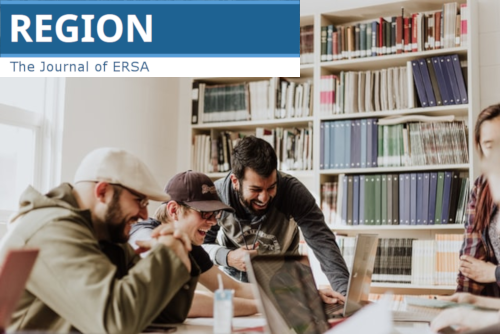Non-Employed People in the Westpfalz Region (Germany) as Target Group of Continuing Higher Education
Potentials of a regional demand-orientation
DOI:
https://doi.org/10.18335/region.v7i2.269Abstract
Higher Education Institutions (HEIs) and especially continuing higher education has an influence on the development of a region. By focusing on demands of the regional economy as well as its population, these data contribute to the demand-oriented development of study programmes. Therefore, continuing higher education at HEIs is getting more attractive and the participation rate can be enlarged. Another aspect could be the identification of new target groups, for example regional minorities. In this paper, the Westpfalz region (Germany) is considered as an example, as it has interesting characteristics, such as the structural weakness and the participation in further education that is below national average. For this purpose, a representative Regional Population Survey was conducted to describe the population of the Westpfalz region and their educational needs. The group of non-employed people stood out in this survey because of their size and their willingness to participate in continuing higher education. In contrast to the traditional target group of employed academics, the results of the survey show that there are similarities and differences referring to their educational requirements. These results provide evidence that helps to develop and design study programmes especially for continuing higher education that take into account the needs of this target group. At the end of the paper, the potential impact this may have for the Westpfalz region is discussed.

Downloads
Published
How to Cite
Issue
Section
License
REGION is an open journal, and uses the standard Creative Commons license: Copyright We want authors to retain the maximum control over their work consistent with the first goal. For this reason, authors who publish in REGION will release their articles under the Creative Commons Attribution license. This license allows anyone to copy and distribute the article provided that appropriate attribution is given to REGION and the authors. For details of the rights authors grant users of their work, see the "human-readable summary" of the license, with a link to the full license. (Note that "you" refers to a user, not an author, in the summary.) Upon submission, the authors agree that the following three items are true: 1) The manuscript named above: a) represents valid work and neither it nor any other that I have written with substantially similar content has been published before in any form except as a preprint, b) is not concurrently submitted to another publication, and c) does not infringe anyone’s copyright. The Author(s) holds ERSA, WU, REGION, and the Editors of REGION harmless against all copyright claims. d) I have, or a coauthor has, had sufficient access to the data to verify the manuscript’s scientific integrity. 2) If asked, I will provide or fully cooperate in providing the data on which the manuscript is based so the editors or their assignees can examine it (where possible) 3) For papers with more than one author, I as the submitter have the permission of the coauthors to submit this work, and all authors agree that the corresponding author will be the main correspondent with the editorial office, and review the edited manuscript and proof. If there is only one author, I will be the corresponding author and agree to handle these responsibilities.




